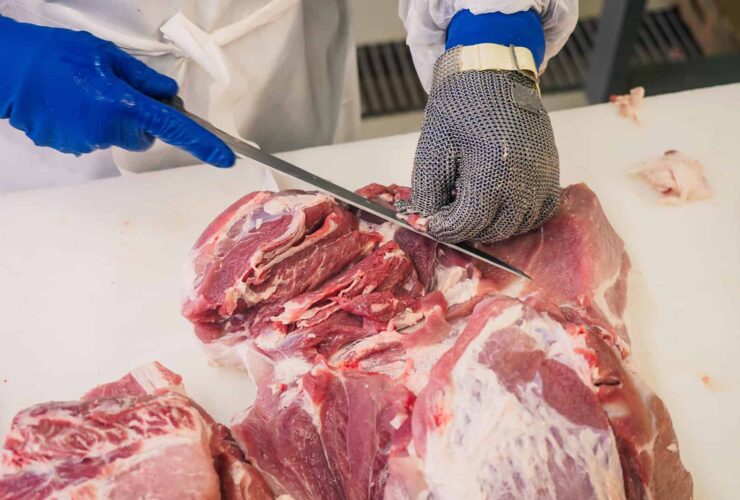Forceful exertion is a common cause of employee injury in food processing plants. Lifting product, pushing carts, dumping product into vats or cooking pots, transferring product from a conveyor to work station — all tasks commonly performed in a food processing plant — can result in back injuries or other types of musculoskeletal disorders.
Simply defined, force is the amount of muscular effort expended to perform work. It can range from small (the amount of force to push a button) to great (like repeatedly lifting and stacking product) and includes everything in between.
The amount of force used in a specific task directly affects the level of risk of employee injury. Exerting great amounts of force over a long period of time can result in fatigue and physical damage to the body. Even single exertions of force, whether small or great, can lead to damage if not performed properly.
Factors Affecting Force
There are a number of factors that affect the amount and level of force required for moving or handling product or tools, including:1
- Load shape, weight, dimensions, and bulkiness
- Grip type, position, and friction characteristics
- Amount of effort required to start and stop the load when moving it (i.e., how physically demanding it is to accelerate or decelerate the load)
- Length of time continuous force is applied by the muscles
- Number of times the load is handled per hour or per work shift
- Amount of associated vibration
- Body posture used
- Resistance associated with moving the load (e.g., over rough flooring or with poorly maintained equipment)
- Duration of the task over the work shift
- Environmental temperature
- Amount of rotational force (e.g., torque from tools or equipment)
- Horizontal distance of the load from the worker
- Vertical location of the load (overhead, waist level, or ground level)
When any of these factors are repeated continually over long periods of time, or are even slightly too much for the employee performing them, the risk of injury is increased.
Reducing the Risk of Injury
So how do you reduce the risk of injury brought on by the exertion of force? There are two main categories of improvements — Engineering and Administrative — you can make to reduce the risk of employee injuries in your plant.
Engineering Improvements
These simple ergonomic improvements made to your equipment and work flow can greatly reduce the risk of employee injuries:
- Reduce the size of packages and boxes that need to be lifted and stacked
- Reduce the weight of packages and boxes that need to be lifted and stacked
- Include handles on packages and boxes
- Outfit your plant with vacuum and pallet lifts
- Invest in dumpers and tippers
- Invest in lift-assisting devices, such as dollies, carts, and forklifts
- Use chutes and slides to maneuver product from conveyors
Administrative Improvements
- Train employees to use safe work practices when lifting, bending, and twisting
- Train employees on the safe use of equipment
- Developing a team model to assist with lifting heavier product
- Replace lifting tasks with pushing or pulling tasks
Make an Investment
There are a number of ergonomic equipment solutions you can implement into the work flow of your plant to reduce the risk of employee injury caused from forceful exertion, including:
- Dumpers and tippers
- Chutes and slides
- Pallet lifts
- Vacuum lifts
- Carts and mobile racks
These solutions take the exertion of force on themselves, eliminating the need of your employees to exert great amounts of force. The less force they exert, the safer they are.
If you’re ready to invest in ergonomic and lifting solutions to reduce the risk of forceful exertion injuries to your employees, Fusion Tech can custom design and manufacture solutions that fit the needs of your specific application.
1. Department of Industrial Relations Cal/OSHA Consultation Service Research and Education Unit. Ergonomics in Action: A Guide to Best Practices for the Food-Processing Industry. California: California Department of Industrial Relations, 2003. Print.
[Image via U.S. Naval Forces Central Command/U.S. Fifth Fleet cc]



